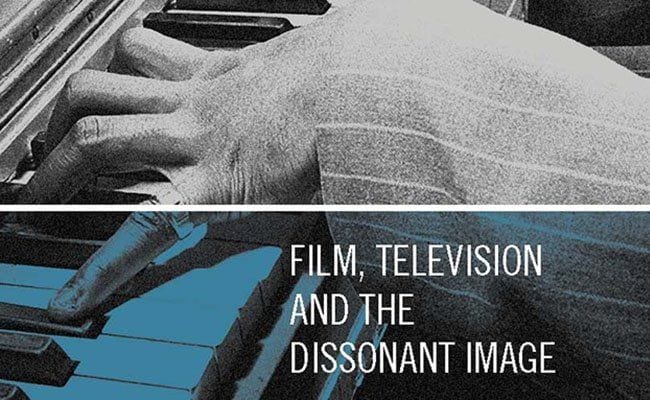
Jazz is, arguably, a very abstract form of music. Certainly, if we are talking about instrumental jazz, the notion that you can draw it or diagram it or give it visual shape is slightly absurd.
But that has not kept visual artists of various kinds from finding inspiration in the dynamic that the music constantly suggests: conversation, fluid motion through swing rhythm, call-and-response, creation through improvisation. Matisse used the word “jazz” to title a book of colorful cut-out prints and choreographers have found the music compelling.
Film is an interesting topic too, and scholar Nicolas Pillai sets a daring challenge in his new study Jazz as Visual Language. There’s an argument, of course, that jazz has inspired film directors. It’s interesting to note that the development of cinema and of jazz have had roughly the same lifespan — from the early decades of the 20th century today, with roughly equivalent periods of flowering and of change. Both forms have developed rapidly, and both have arrived at an intriguing and uncertain present, with technological changes threatening their economic models of success.
Pillai, however, is most interested in an intriguing intersection of jazz and film. In this study, he focuses on three examples of jazz as it could be visually depicted. First, he looks carefully at Len Lye’s three-minute A Colour Box from 1935, one of the most important animated films in the history of the medium, which was set to music by Don Baretto and His Cuban Orchestra and inspired by jazz as a concept. Then he moves on to two examples of jazz musicians performing on film: a couple by Gjon Mili, who was a well-known Life magazine photographer, and Jazz 625, a BBC television show broadcast between 1964 and 1966.
The essential premise of Pillai’s argument is that jazz is more than music alone. He asserts that it is “an adaptive process, in constant dialogue with the culture that encompasses it” (22). Therefore, he asserts, the myth of jazz and how that myth is depicted visually by film and televisual artists is essential to defining the music itself, not “a second-order language” but “a primary articulation of jazz cultural contribution” (22). In short, you can’t really appreciate jazz without understanding it articulation in visual media.
The Lye film was revolutionary. He sketched and drew directly onto the film to create his animation. The music and the formal elements of the filmmaking were both boldly freeing at the time. Pillai argues that the politics of jazz — particularly the racial politics — were critical for Lye, a New Zealander who moved to London in 1925 and made this film for the British General Post Office film unit. Structurally, Pillai writes, “the visual elements of the film engage in dialogue with its soundtrack” (36). This interactivity and bold innovation, then, are reflections of jazz’s meaning for the culture.
The Mili films, even though they are documents of jazz musicians playing the music, are also looked at through the eye of a film critic rather than a music critic. it is their sense of visual innovation and structure that interests the writer. One reflects and informs the other. Similarly, with Jazz 625, the technical and visual style of the show are “integral to the generation of musical meaning” (84).
More casual readers (that is, readers who are not inclined to follow academic writing or who are somewhat less interested in the highly Anglocentric take of this “jazz studies” view of the music) will be more interested in Pillai’s introduction, which looks at some more common examples of jazz’s depiction in film in television. Pillai’s brief but sharp analysis of Damien Chazelle’s Whiplash — the film about the overbearing jazz school teacher who torture’s Miles Teller’s character, the drummer — hits home and really makes sense. Similarly, he looks at the famous Sound of Jazz CBS Television broadcast that famously featured Lester Young and Billie Holiday interacting late their careers.
In these less mannered sections of the book, Pillai gives us a sense of how filmmakers refracted jazz using a camera, both embodying it and layering it with new (or newly revealed) meaning.
There are plenty of places in this book where the non-academic reader may grow exhausted with the academic language and references to the “semiotic form”. This is not a book that examines jazz so much as a film studies paper that uses its own methods to get at the power and impact of the music across media. The result is dense but interesting, cool but erudite — rather like jazz itself.


![Call for Papers: All Things Reconsidered [MUSIC] May-August 2024](https://www.popmatters.com/wp-content/uploads/2024/04/all-things-reconsidered-call-music-may-2024-720x380.jpg)



